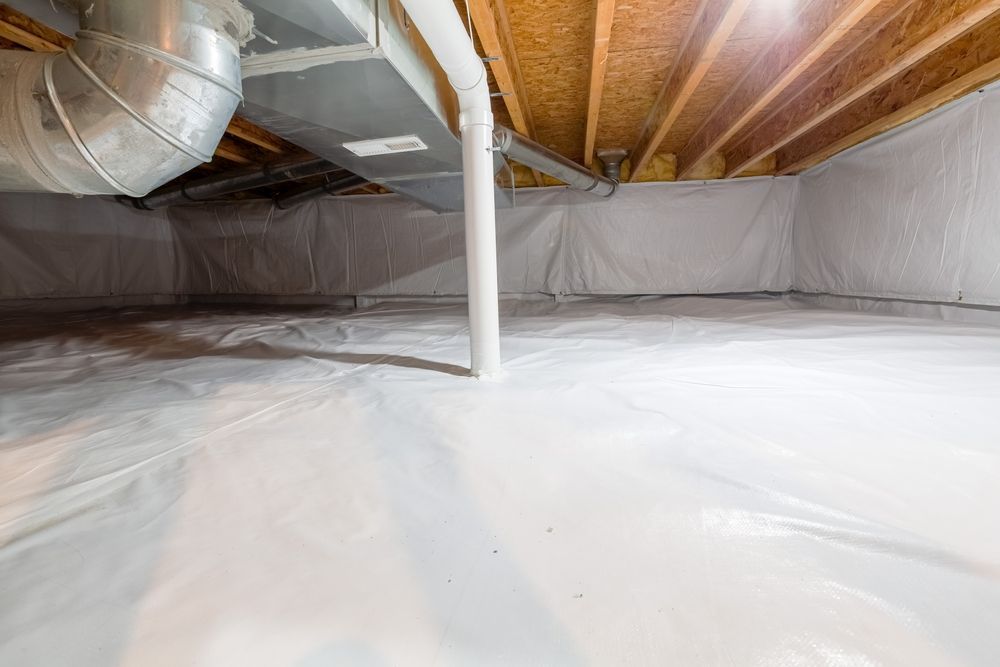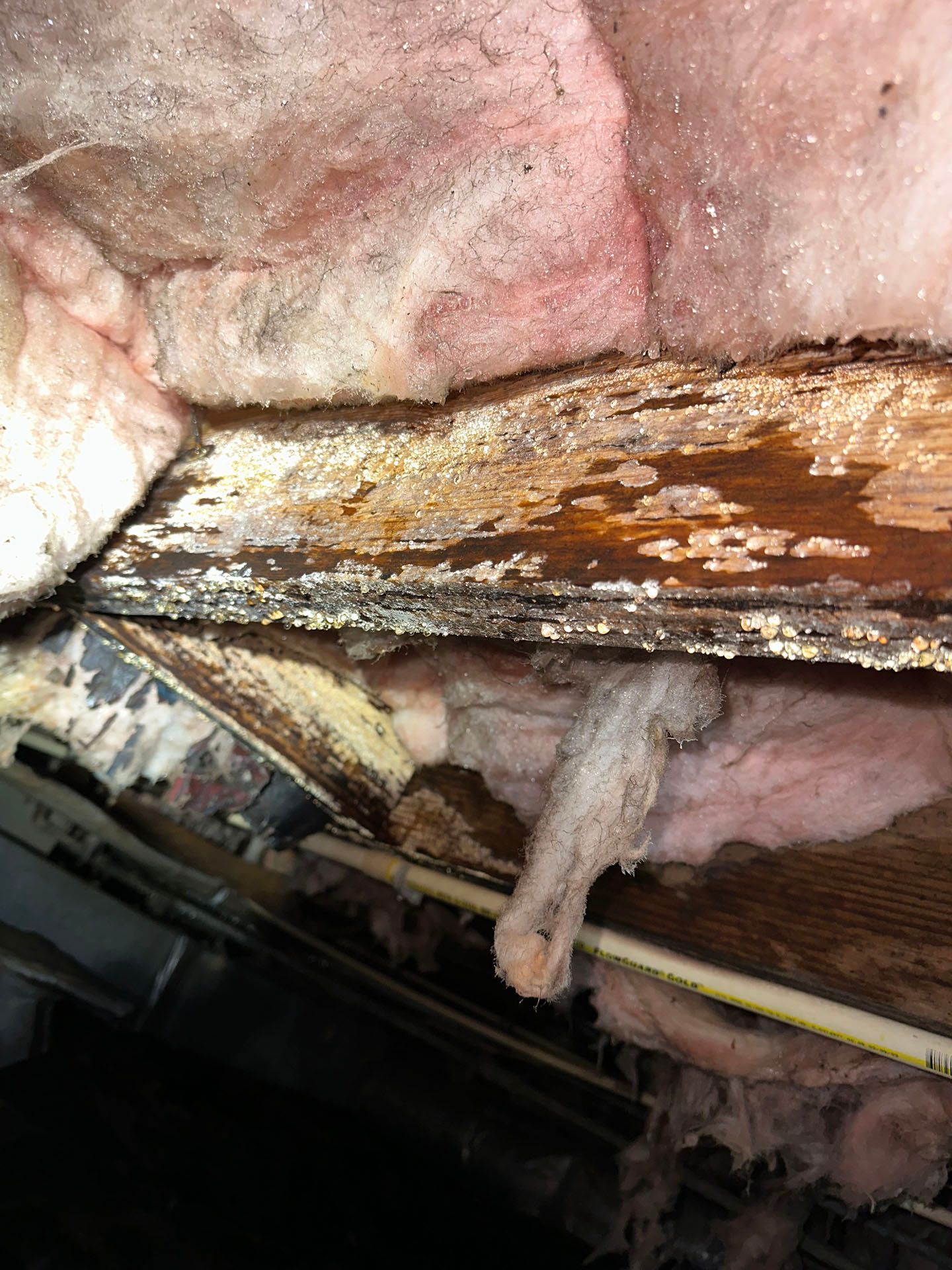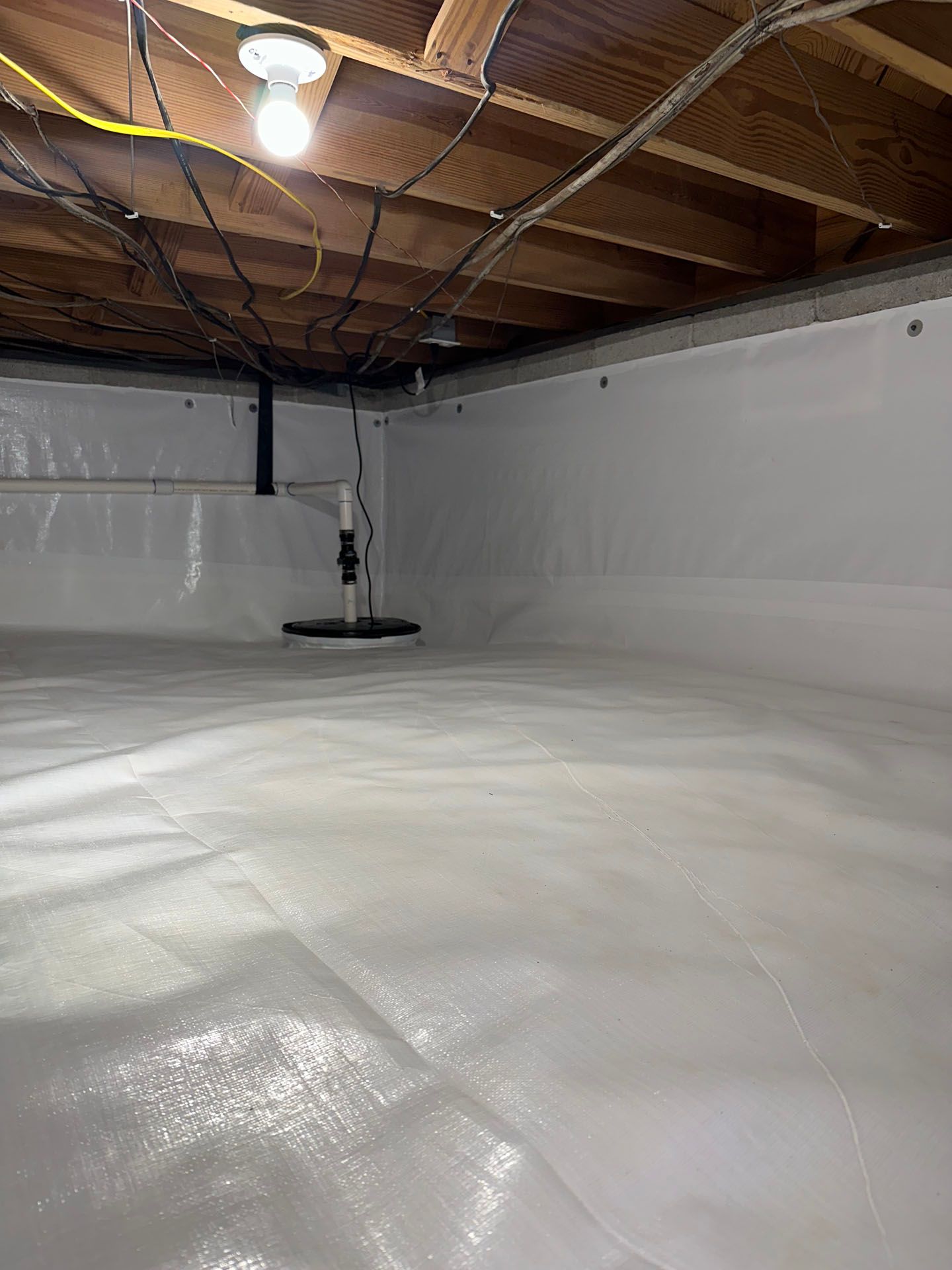Huntsville, Alabama

Claim Your FREE Crawl Space Inspection Today!
Sawyer Williams: 256-727-4422
Schedule Your Free estimate!
No-Obligation, Free Inspections
No-Obligation Free Estimates
We Warranty All of Our Work
100% Satisfaction Guaranteed
Are you concerned about water damage in your crawl space? If so, you're in the right place! Crawl spaces are one of the areas that homeowners often overlook when preparing for flooding and its consequences. As such, many don't know whether crawl spaces can flood. The simple answer is yes - crawl spaces can flood, just like any other area in your home. In this blog post, we'll walk you through the basics of crawl space flooding and tell you what you need to know to protect your home from water damage. From understanding common causes of crawl space flooding to the steps you can take to minimize the damage and get your home back to normal, we'll cover it all - so let's dive in!
Quick Review of Key Points
A crawl space can be prone to flooding depending on its location, the amount of rainfall and any existing drainage problems. It is important to consider these factors when assessing how likely a crawl space is to flood.
What is a Crawlspace Flooding?
A crawlspace flood is an infiltration of water into an area below or adjacent to a home's foundation. This can range in severity from minor dampness and mold growth all the way to full submersion of the structure. A crawlspace floods when groundwater seeps through the ground, walls, windows, or vents of the crawlspace, or when rainwater or surface runoff accumulates and causes water to pool and saturate the area. The water that collects in a crawlspace can be catastrophic not only to the structure itself but also to the belongings inside.
From a practical standpoint, some experts argue that it's wise for homeowners to waterproof their crawlspaces completely, even if they aren't located in an area prone to flooding. This will ensure adequate protection against water seeping in from the sides and around exterior doors. However, others assert that this is unnecessary; if your home is built on high enough ground and away from bodies of water, you should be able to get by with basic waterproofing measures.
Ultimately, regardless of which approach you prefer, knowing the causes of crawlspace flooding is essential in order to determine what types of prevention strategies are necessary for your specific location and circumstance. That's why it's critical move onto discussion about what could be causing your crawlspace flooding before trying to address it: What are the causes of crawlspace flooding?
What are the Causes of Crawlspace Flooding?
The underlying cause of crawlspace flooding is water accumulation, making it important to understand potential causes that could lead to this issue. Common sources of water include rain, groundwater infiltration, and plumbing issues. Rain is typically the most recognizable culprit as heavy rains can saturate the ground around a home, leading to flooding and seepage into the crawlspace through windows or doors. Groundwater infiltration occurs when soil holds too much water, producing hydrostatic pressure which forces it up from the ground and into the crawlspace. Lastly, plumbing issues such as freezing pipes, poor drainage systems and broken water lines are significant sources of crawlspace flooding.
In addition to these tangible causes, there are other factors such as climate and topography that can contribute to a crawlspace becoming inundated with water. Homes situated in areas of high precipitation on hilly terrain are especially susceptible due to their exposure to more rain than homes located in drier climates at lower elevations. A poorly insulated space can also be more vulnerable to moisture accumulation as air trapped in the space will produce condensation on walls and other surfaces when temperatures change.
Importantly, it’s not just natural occurrences that can lead to crawlspace flooding. Poorly laid foundations or inadequate insulation along with a lack of sufficient grading can all lead flooded crawlspaces unless addressed properly by an experienced professional. While preventing flood damage is often centered around mitigating these potential causes ahead of time, building owners should be aware of them for quick action later on in order to reduce any costly repairs or replacements needed down the line.
Now that we have discussed the main sources of crawlspace flooding, let’s take a closer look at what heavy rains can mean for a property with an inadequately sealed basement or crawlspace in the following section.
Top Summary Points
The main sources of crawlspace flooding are water accumulation from rain, groundwater infiltration, and plumbing issues. Climate, topography, insulation, and foundations can all play a role in the amount of water that accumulates in a crawlspace. To prevent damage from flooding, it is important to mitigate any potential causes before they become an issue as well as being aware of them for quick action later on.
Heavy Rains
Heavy rain can be a major source of crawl space flooding, especially when local rainfall totals exceed the average. Homeowners in areas which tend to experience heavy rains should be especially mindful of their crawl space and ensure that proper drainage systems are in place. The drainage systems should have sufficient capacity to handle large volumes of water.
To prevent flooding from heavy rain, you should have a system in place to properly collect and divert water away from the foundation of your home. This includes directing roof runoff away from the house using downspouts and grading the soil around your home to facilitate adequate drainage. It's also important to inspect your gutters frequently for blockage or poor alignment, as any blockages or clogs can cause water to back up and flood the crawl space.
In addition, many homeowners opt for installing sump pumps in their crawl spaces, which provide an effective method of removing excess moisture and preventing floods. Sump pumps rapidly move water out of the crawl space after a heavy rain event, reducing the risk of flooding due to extreme water buildup deep within the foundation walls.
Finally, if you live in an area with particularly high rainfall levels, it may be beneficial to consider having a waterproofing specialist install a sealant on your basement walls to protect against seepage. Sealing your basement walls will help contain any entering water and protect your home from moisture-related damage like mold growth or fungus.
Heavy rains can play a major factor in causing crawl space floods, but adequate prevention steps can minimize the potential for catastrophic damage. Moving forward into our next section about underground seepage, we'll discuss another common factor that contributes to flooded basements and crawl spaces.
Underground Seepage
Underground seepage of water is a major cause of crawl space flooding. When groundwater accumulates at the bottom of a crawl space, it can become pressurized and be forced up through cracks in basement walls, resulting in water rising up on the flooring and eventually causing flooding. This can be especially problematic when the foundations or buildings are installed over areas with high water tables, as this increases the amount of water pressure from below.
The key to mitigating the risk of crawl space flooding caused by underground seepage is knowing the local geology such as soil types, drainage patterns, and other topographic features that may contribute to higher levels of groundwater near a building foundation. It's essential for homeowners to have an accurate understanding of this information before constructing any type of structure.
Additionally, building owners should be sure to properly seal any cracks in their basement walls to prevent water from seeping into their crawl space. While it may not completely eliminate the risk of flooding due to underground seepage, it can certainly help minimize its effects if water does manage to get in.
Finally, investing in sump pumps or battery-operated pumps is another wise decision to help combat against flooding due to underground seepage. Sump pumps work well when installed underneath inner steps away from the center of a crawl space; they will collect any water and pump it away from the building’s foundation. Battery operated pumps can also come in handy if there’s a power outage and regular sump pumps are rendered obsolete – these are usually manually switched on/off as needed.
Now that we have discussed underground seepage and its potential for causing crawl space flooding, let's move on to our next section: poor drainage.
Poor Drainage
Poor drainage is one of the main causes of crawl space flooding. Drainage issues can arise when water seeping in from the perimeter or entering through faulty pipes is not properly managed. In fact, excess moisture can lead to standing pools of water, which can cause extensive damage to both the structure and contents of a home.
When considering poor drainage, there are two sides to this argument. On one hand, it is possible for excessive moisture to lead to standing water which can cause irreparable harm to the foundation of a home. On the other hand, protective measures can be taken to address drainage problems and prevent flooding. For instance, many experts suggest including a sump pump in a low-lying area prone to flooding in order to redirect excess water away from the property.
The consequences of poor drainage should not be underestimated. As such, it is important to be aware of what measures should be put in place to prevent crawl space flooding before any damage occurs. The next section will take a closer look at the impact of crawlspace flooding on homeowners.
The Impact of Crawlspace Flooding
The impact of crawlspace flooding can range from minimal to devastating. On one hand, if caught and addressed early, the damage may be relatively minor and easy to repair. This is because crawl spaces are rarely used for living and so they are often left out of the maintenance cycle. As a result, damage and rot resulting from water accumulation can go unnoticed until it becomes more severe.
On the other hand, once the elements of a flooded crawl space become more pronounced, these areas can pose serious damage to your home’s structure and systems. Moisture levels in the air as well as inside walls and ceilings caused by water in the crawl space can lead to mold formation, which creates an unhealthy household environment as well as aesthetic problems. Furthermore, water weakens wooden support beams which can lead to structural instability that puts you at risk for injury. In some cases, low spots near HVAC units located in a wet crawl space provide an ideal breeding ground for dangerous insects such as termites or other wood-damaging pests.
It’s important to remember that preventing flood damage from occurring or worsening is vital in avoiding costly repairs or replacements down the line. With this in mind, a homeowner should inspect their crawl space regularly and address any potential problems quickly before it increases in severity.
The next section will discuss what types of damage parents should look out for when it comes to crawlspace flooding and how they can prevent it from impacting their home further.
Damage to the Home
The damage caused by a flooded crawlspace can be significant. The most obvious issue is the impact to any belongings stored in the crawlspace, as these items may become irreparably damaged and need to be replaced. In addition, if the water remains in the crawlspace for an extended period of time, it could cause structural damage to the home’s foundation. This could lead to water seeping up through cracks and gaps in the flooring of higher levels of the home and into living spaces, resulting in extensive water damage.
On the other hand, some have argued that flooding of the crawl space isn’t as damaging as many believe. For example, they might point out that flooding can actually help keep a cool temperature in a space, since standing water absorbs heat more slowly than air does. They might also object that not only do organic materials accumulate and feed mold colonies without right humidity control, but building materials exist that don't degrade even with persistent moisture. This would mean that preventive measures wouldn’t necessarily need to be taken; one could simply opt for materials that are impervious to prolonged exposure to moisture or water.
Ultimately, however, taking action against possible flooding is safer than hoping it won’t amount to anything serious. Extensive damage from heavy flooding in a crawl space should not be taken lightly, as it could result in costly repairs and renovation being necessary throughout not just the crawl space but also multiple levels of the home. Therefore, it is important to explore how we can prevent this kind of event before disaster strikes. To pave the way for prevention, we'll next discuss what steps you can take to stop a crawlspace flood from occurring.
Prevention of Crawlspace Flooding
One of the best ways to prevent crawl space flooding is by regularly inspecting it and addressing any detected problems as soon as possible. Common crawl space maintenance tasks include looking out for areas of moisture, checking for faulty drain outlets, sealing the floor and make sure downspouts are directing water away from the home’s foundation. It’s also important to ensure gutters are well maintained and clear of debris to avoid clogging or overflow.
Some home owners opt to have a sump-pump installed in their crawlspace as an extra protection against flooding. Though this recommended solution has been known to reduce the risk of submersion and can be beneficial in instances where natural drainage isn’t ideal, some will argue that it’s too costly and require routine inspections/maintenance as well. Opposers warn that installing a sump-pump system can cause more harm than good if malfunctioning due to poor installation or negligence (i.e. failure to remove stagnant water).
Regardless of opinion on sump-pumps, having a professional inspect and evaluate your home for any potential risks for flooding is always the safest route when it comes to preventing crawl space flooding. If a professional isn't available, familiarizing yourself with your home's landscape and making note of any areas on your property that could contribute to pooling water at the foundation can help you spot any potential trouble spots in advance.
Through preventative maintenance, awareness and proper upkeep you can easily avoid uncomfortable surprises like finding your crawlspace filled with – sometimes hazardous – excess water caused by unforeseen circumstance. Now that you know what precautions you need to take in order maintain a dry and healthy crawlspace, let's go over signs of flood damage that could signal there may already be an issue. The next section will discuss "Signs of Crawlspace Flooding".
- In the 2017 Global Climate Risk Index, flooding was found to be the most frequent natural disaster worldwide.
- According to a 2010 research paper, 88% of all housing units in the United States have an area below them (such as a basement or crawl space).
- According to the National Flood Insurance Program, any type of house can experience flooding - regardless of its location or elevation - and that a flooded crawl space can cause major structural damage.
Signs of Crawlspace Flooding
A homeowner should be aware of the signs to detect a crawlspace flooding. Unfortunately, depending on the type of water damage, some possible signs may be hidden until visible mold forms in the building materials such as carpet, plywood or insulation. Here are some signs to watch out for:
• Visible standing water or pooling water: Depending on the elevation and location of the home, you might need to inspect certain areas for standing or pooling water. Any excess amounts of standing or pooled water should be addressed and removed as quickly as possible. If there is concentration of water around floor joints, doors or walls then that’s a sure sign of wetness and possibly flooding.
• Humidity infiltration: High levels of humidity in a house can lead to condensation on cold surfaces like windows and cabinets with high concentrations of moisture. This occurs when there is more humidity in the air than the surface can hold leading to sweat-like droplets on colder areas.
• Musty odor: An indication of persistent moisture in the crawlspace could also mean a musty smell throughout the home. This could indicate mold formation which is brought along by humid conditions associated with wet crawlspaces.
• Structural issues: Over time, if flooding persists it can cause structural damages like floors and walls buckling, warping and sagging due to insufficient support from wood rot or weakening. Foundation movement including cracking, wall tiles shifting and even wall cracks may be caused by excessive soil moisture near foundation walls due to poor drainage and/or ground infiltration near basement walls or exterior foundation areas.
Now let’s take a look at both sides of the argument though different viewpoints when it comes to crawlspace flooding. On one side we have those who say that assessing evidence too late means unnecessary damage has already occurred, leading to expensive repair costs that were avoidable. On the other side are those who argue that since most crawlspaces are quite small, it can be difficult to detect problems until they have become more advanced (and costly) making assessment more difficult. Both sides agree however that having active monitoring systems in place will help allow homeowners to mitigate their losses if they ever experience flooding in their crawl space.
FAQ
What kind of damage can result from a crawl space flood?
Crawl space flooding can cause extensive damage to the structure and contents of a home. When water pools in the crawl space, it can create moisture that leads to mold growth, unleveled floors, rotting wood and foundation settling. The resulting damage can be costly to repair and remediate, as the water needs to be completely removed before any repairs or restorations take place. Additionally, moisture encourages insect infestation, leading to further damage and potential health hazards. In short, crawl space flooding can result in significant property damage and should always be addressed as soon as possible.
How can I prepare for the potential for a crawl space to flooding?
To be prepared for a potential crawl space flooding, it is important to inspect the crawlspace on a regular basis. Before and after heavy rainfall or snowmelt, check the area for water or signs of water damage, like damp walls or floors. Make sure gutters and downspouts are in good condition and redirecting water away from the house’s foundation. Install a sump pump with an alarm to alert you if the water level rises too high. Consider waterproofing the crawl space walls and floor to protect from moisture and flooding. Finally, store any items you wouldn’t want ruined by moisture or water in plastic containers that can easily be moved when necessary. By proactively making these preparations and staying vigilant during rainy seasons, you can better prepare yourself against flooding in your crawl space.
What reasons might cause a crawl space to flood?
There are several reasons why a crawl space may flood. The most common cause is heavy rainfalls and water accumulation from the nearby rivers, streams, or lakes. Another common reason for crawl space flooding is inadequate grading around the foundation of the house, which causes water to pool near the perimeter and seep through cracks in the foundation or walls. Poor or obstructed gutters and downspouts can also contribute to flooding by not allowing rainwater to be safely diverted away from the home. An interior plumbing leak, such as burst pipes or a broken sump pump, can also be a potential cause for crawl space flooding. Lastly, in some areas there is a high water table that may cause ground water to seep into lower levels of the home, leading to crawl space flooding.

Written by Sawyer Williams
Precision Crawlspace & Renovations
Sawyer has specialized in crawl space and foundation repairs for over six years. As the founder of Precision Crawlspace and Renovations, he is one of Huntsville's top experts in crawlspace moisture control. He has prior experience installing these systems, which has prepared him to solve complex problems related to crawl space encapsulation, mold remediation, and waterproofing.
Recent Blog Posts
Huntsville's Crawl Space News



What are you waiting for?
We Solve Crawl Space Issues!
Get reliable crawl space repair services at an affordable price, provided with the high level of service you deserve.
Call Us Today at: 256-727-4422
All Rights Reserved | Precision Crawlspace & Renovations

